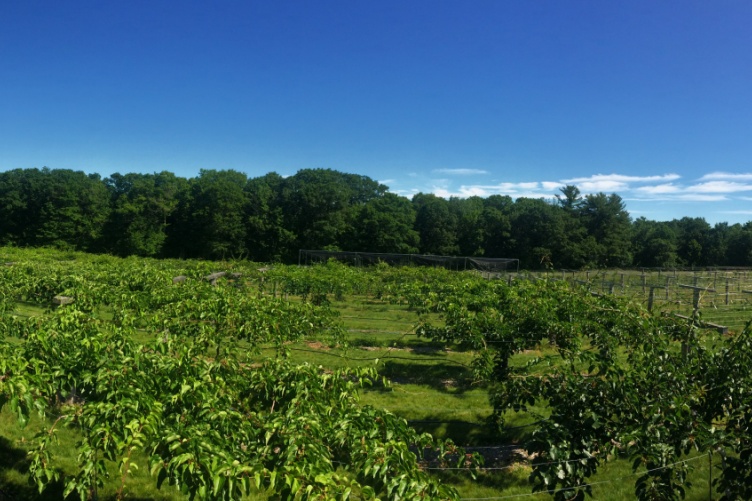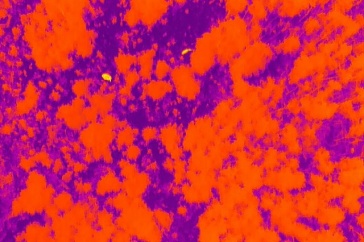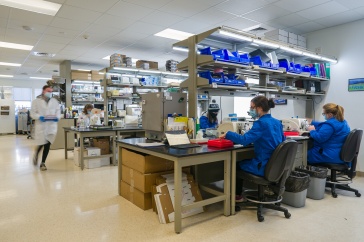
Prospective kiwiberry growers in the Northeast now have a roadmap to help them grow this emerging specialty fruit crop. Researchers with the New Hampshire Agricultural Experiment Station at the University of New Hampshire have produced an online guide that provides in-depth, regionally relevant information.
Comprised of a statewide market assessment, a detailed production manual, and an enterprise analysis, Growing Kiwiberries in New England: A Guide for Regional Producers (http://www.noreastkiwiberries.com/) reflects information gathered over five years since the experiment station initiated its kiwiberry research and breeding program in 2013 at its Woodman Horticultural Research Farm.
 With their general adaptation to the region, their attractive appearance, intense and complex flavor profiles, high levels of bioactive compounds, and easy consumability, kiwiberries have long been recognized for their potential as a high-value crop in the Northeast. They are a tender, smooth-skinned relative of the fuzzy supermarket kiwi that are about the size of a grape with a tropical taste.
With their general adaptation to the region, their attractive appearance, intense and complex flavor profiles, high levels of bioactive compounds, and easy consumability, kiwiberries have long been recognized for their potential as a high-value crop in the Northeast. They are a tender, smooth-skinned relative of the fuzzy supermarket kiwi that are about the size of a grape with a tropical taste.
Kiwiberries have an extensive 140-year history of cultivation in New England, first as an ornamental landscape vine and subsequently as a new fruit crop on private estates and in backyard gardens. In more recent decades, a handful of producers have experimented with field-scale kiwiberry production, demonstrating the commercial viability of the crop in the region and developing interest among researchers and consumers.
Developed by experiment station researcher Iago Hale, associate professor of specialty crop improvement, and graduate student Will Hastings, manager of the kiwiberry vineyard, the guide supports ongoing development of kiwiberries as a high-value fruit crop for the Northeast. Globally, kiwiberry production is on the rise. With the information presented in the guide, experiment station researchers are hopeful producers in the Northeast will be better prepared to decide whether to grow kiwiberries.
According to the researchers, there is great potential for growth of a kiwiberry sector in the Northeast due to consumer interest, an established valuation of local produce, the area’s unique culture of direct-market horticultural crops, and the extremely low level of regional production to date.
This material is based upon work supported by the NH Agricultural Experiment Station, through joint funding of the National Institute of Food and Agriculture, U.S. Department of Agriculture, under award numbers 233561 and 1006928, and the state of New Hampshire.
Founded in 1887, the NH Agricultural Experiment Station at the UNH College of Life Sciences and Agriculture is UNH’s original research center and an elemental component of New Hampshire's land-grant university heritage and mission. We steward federal and state funding, including support from the USDA National Institute of Food and Agriculture, to provide unbiased and objective research concerning diverse aspects of sustainable agriculture and foods, aquaculture, forest management, and related wildlife, natural resources and rural community topics. We maintain the Woodman and Kingman agronomy and horticultural research farms, the Macfarlane Research Greenhouses, the Fairchild Dairy Teaching and Research Center, and the Organic Dairy Research Farm. Additional properties also provide forage, forests and woodlands in direct support to research, teaching, and outreach.
-
Written By:
Lori Tyler Gula, PhD | NH Agricultural Experiment Station | lori.gula@unh.edu | 603-862-1452



















































